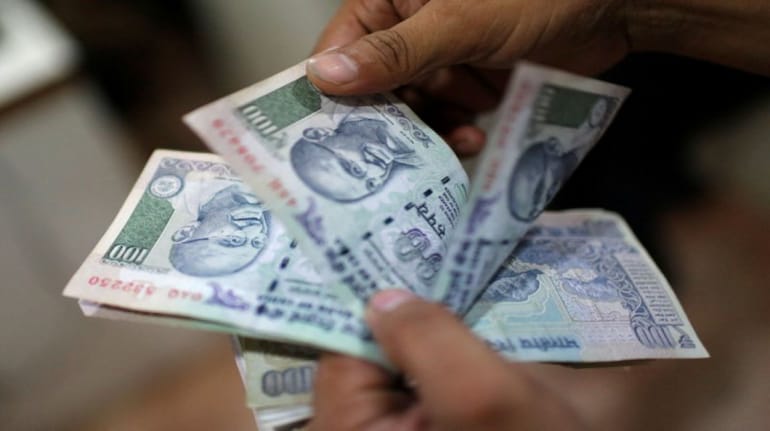



The liquidity deficit in the banking system rose to over 13-year high after the outflows of goods and services tax (GST). According to the Reserve Bank of India’s (RBI) data, liquidity in the banking system is in deficit of around Rs 3.34 lakh crore on January 23, higher from Rs 2.72 lakh crore on January 22.
The liquidity deficit is highest since March 31, 2010, as per Bloomberg data.
The liquidity deficit means the amount of funds banks need to borrow from the interbank market or from the central bank.
Experts said that this will prompt central bank to conduct more variable rate repo auction to support huge deficit liquidity.
“The rise in banking system liquidity deficit to Rs 3.34 lakh crore as of January 23 was led by GST tax payments, which starts from 20th onwards. System liquidity deficit has remained in deficit even after the phased removal of I-CRR (implement in August 2023 and removed by October),” said Gaura Sengupta, economist at, IDFC First Bank.
Further, V. Ramachandra Reddy, Head Treasury, The Karur Vysya Bank said this is due to the increase in cash in circulation owing to the festival season and government also keeping the hefty balances, weighted on the liquidity.
Also read: Indian bond markets poised for a $100-billion inflows, predicts HSBC MF
According to the Kotak Mahindra Bank’s report dated January 23, there is an expected outflow of Rs 1.98 lakh crore and on the other hand inflows were expected worth Rs 1.75 lakh crore during the week January 20-26.
The outflows included Rs 1 lakh crore of GST, and Rs 86,300 crore worth of auction, Kotak Mahindra Bank’s report said.
Similarly, the inflows include coupon inflows of Rs 10,400 crore, and redemptions of treasury bills and government securities worth Rs 84,00 crore, report added.
After the liquidity deficit widened, rates on the call money surged sharply over the RBI’s Marginal Standing Facility (MSF) rate. The weighted average call money rate was trading at 6.8355 percent on January 24, which was over 8 basis points (bps) higher than MSF rate. One basis point is one hundredth of percentage point.
India ratings in a repot said amid the sustained liquidity pressure in the banking system, short-term money market rates, starting from overnight rates to commercial papers/ certificates of deposit, have remained elevated for long. "Ind-Ra believes this is not conducive for the financial system as well as economic growth."
To support liquidity, the central bank conducted various variable rate repo auction, but that did not helped much.
On January 23 too, the RBI conducted variable rate repo auction worth Rs 1.25 lakh crore and allotted Rs 1,25,005 crore at 6.72 percent cut-off rate. The auction got huge response from the banks, who placed bids worth Rs 1,97,475 crore due to huge deficit liquidity.
Reddy further added that bond redemption of Rs 59,000 crore along with Month end spending by government will defuse the deficit problem to some extent hence, I expect the RBI may roll over Rs 1.50 lakh crore to Rs 2 lakh cr variable rate repo.
Also read: MC Exclusive: Interim Budget likely to offer enhanced subsidies under PM Suryoday Yojna
In the last few days, owing to higher deficit liquidity, some short term rates have also shot up significantly. On January 19, Moneycontrol reported that yield on commercial paper (CP) maturing in three months rose to near levels seen during the Infrastructure Leasing & Financial Services (IL&FS) crisis in 2018. The yield on CP traded at 8.40 percent on January 18, which was the highest since November 6, 2018, when the yield was 8.83 percent.
The yield on CP has been on an upward trend in January and rose 5-15 basis points this week. Paper issued by non-banking finance companies saw an uptick in yield of 10-15 bps and those by manufacturing companies rose 5-10 bps. One basis point is one-hundredth of a percentage point.
The yield on paper issued by NBFCs maturing in three months rose to 8.20-8.50 percent this week from 8.10-8.30 percent last week, and those on manufacturing companies’ paper rose to 7.70-7.90 percent from 7.65-7.75 percent last week.
Going ahead, Venkatakrishnan Srinivasan, founder and managing partner of Rockfort Fincap LLP said as RBI is targeting 4% inflation target, it is expected that they will continue to keep the system liquidity under check and will not hesitate to infuse liquidity as and when required.
"They are continuously monitoring the emerging tight liquidity situation. It is expected that they will bring out some additional measures to ease out of system liquidity in the forthcoming MPC policy," Srinivasan added.
India Ratings in a report said that in the case government spending does not pick up, the RBI will necessarily have to step in more durably to manage banking liquidity.
The RBI conducted five variable rate repo (VRR) auctions of 2-7 days maturity and a main operation (13 days) amounting to Rs 1.75 lakh crore during 16 December 2023 – 14 January 2024, rating agency said.
Discover the latest Business News, Sensex, and Nifty updates. Obtain Personal Finance insights, tax queries, and expert opinions on Moneycontrol or download the Moneycontrol App to stay updated!
Find the best of Al News in one place, specially curated for you every weekend.
Stay on top of the latest tech trends and biggest startup news.